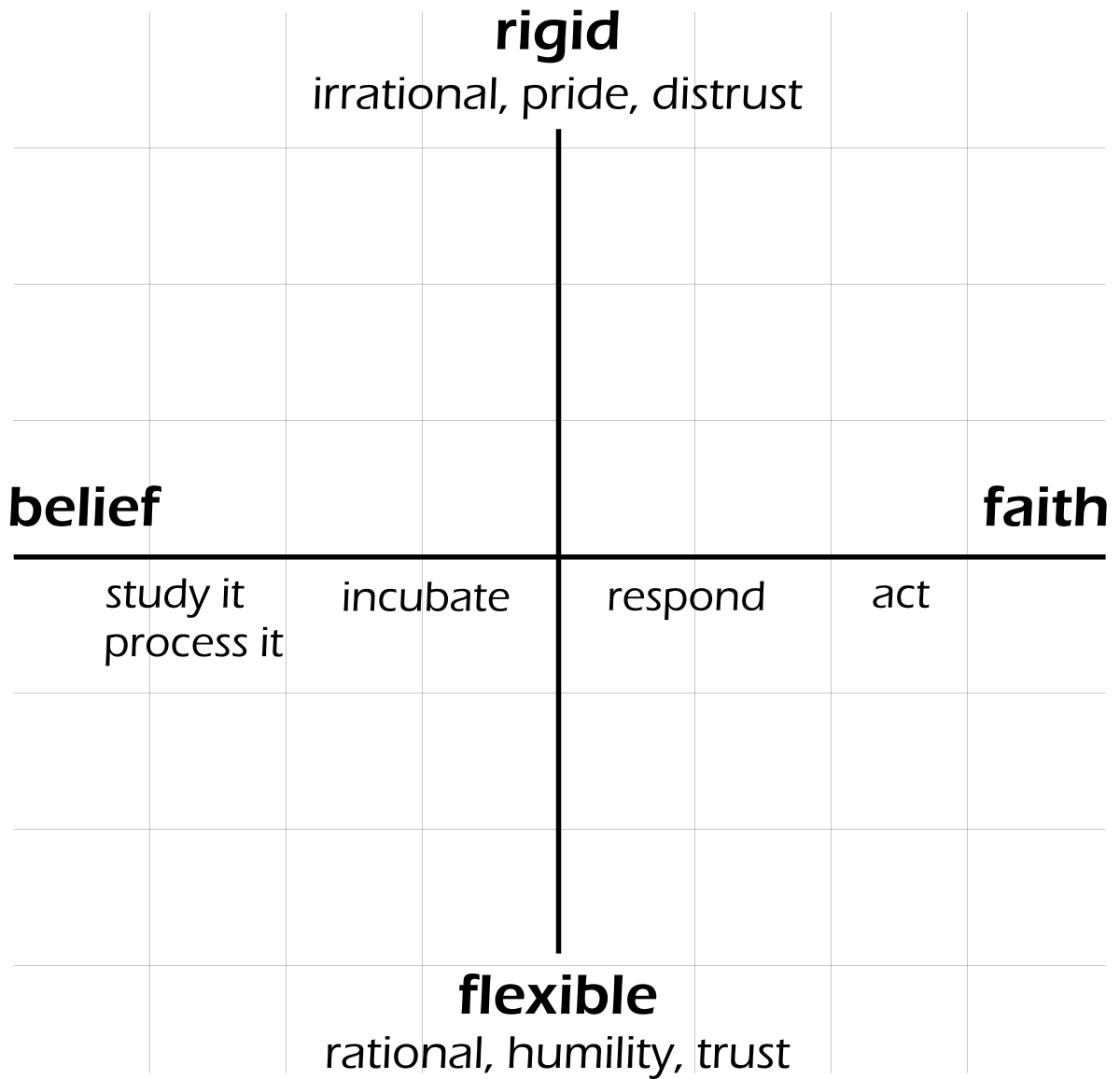
This model is an updated version of the one originally published on September 9, 2020. See blog post Living Polar Bears and Dead Frogs – My Learning Model.
The purpose of this model is to have a tool that can be used to evaluate a faith-based approach to learning. There are two key statements that formed the inspiration behind the model.
The first statement is:
“A position that begins with an inflexible1 conclusion and seeks ‘evidence’ to support it is impervious to reason”
Steve Cuno
This statement forms the top and bottom of the model separated by the horizontal axis, with “rigid” at the top and “flexible” at the bottom. As the statement describes, it is rather impossible to learn anything new unless one is flexible enough to receive it.
The second statement is:
“And as all have not faith, seek ye diligently and teach one another words of wisdom; yea, seek ye out of the best books words of wisdom; seek learning, even by study and also by faith.”
D&C 88:118
This statement forms the left and right of the model separated by the vertical axis, with “faith” on the right. On the left I have placed the word “belief”. Not because “belief” is the opposite of “faith,” but because the purpose of the model is to emphasize that the preferred method of learning new truth is through “faith.” But as not everyone can easily approach learning from a place rooted in true faith, then (as the scripture indicates) the next best method is to approach it through study that can then lead to, or draw one toward, true faith.
To best comprehend what the model is communicating, it is important to understand that for the purpose of this model faith is being defined as something that is more than belief; a principle of action that requires one to act on belief in order to produce faith. Faith is being defined as a principle of power through action, in which one puts those beliefs into action and thereby acquires power. One can spend a lifetime as a “believer”2 without ever developing faith. Before belief can turn into faith, action is required. Without some action consistent with belief, a disciple cannot move along from mere belief to developing faith. It is action, obedience, and living in conformity to God’s will that yields faith.3
The movement from “belief” on the left toward “faith” on the right represents a section of points along a spectrum. Somewhere to the left of “belief” would include “doubt” and “unbelief”. To the right of “faith” would move one toward “knowledge”. Though he is not using the same vocabulary, Paul describes the process in these words:
“…suffering produces perseverance; perseverance, character; and character, hope.”
Rom 5:3-4. NIV
- The word “inflexible” has been added to the original statement so that it more correctly reflects truth. ↩︎
- Not in the sense used in Evangelical Christianity describing a saved brother or sister, but in the sense being described in the model. ↩︎
- “Though you have not seen him, you love him; and even though you do not see him now, you believe in him and are filled with an inexpressible and glorious joy, for you are receiving the end result of your faith, the salvation of your souls.” (1 Peter 1:8-9. NIV) ↩︎